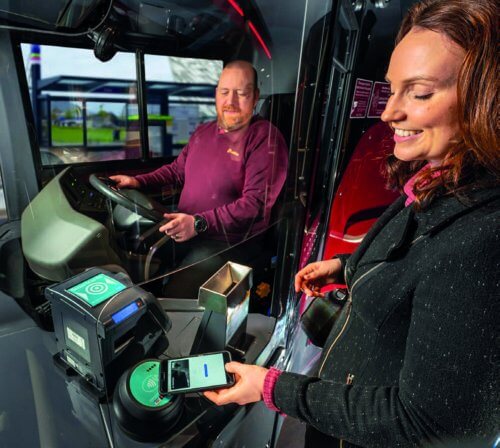Lothian Buses has extended its ‘TapTapCap’ travel scheme to include weekly fare capping across its Edinburgh city network. The operator, supported by its ticketing and payments partner Flowbird, was the first bus operator in Scotland to introduce a ‘contactless and capped’ transport open payment system when launched in 2019.
Initially, the scheme capped the cost of multiple journeys made on the same day, with the best day ticket price automatically applied after three ‘taps’. Now its passengers will be able to travel with more flexibility thanks to the introduction of weekly contactless capping across the network, which means that customers can enjoy unlimited travel Monday to Sunday from as little as £20 per week.
Stevie Chambers, Commercial Projects Manager for Lothian, said: “Weekly capping is a game changer for customers who aren’t sure of their travel plans for the week ahead – they now no longer need to know in advance which ticket type will be the best value for their travel. They simply use the same contactless card or device for all their journeys in a day or a week and ‘TapTapCap’ will automatically work out and charge the cheapest daily or weekly fare.
“As customers return to our network, possibly with new or changed travel habits, we are sure this will be a welcome addition to our ticket offering, by removing the need to choose between pay-as-you-go or a weekly ticket.”
Anthony O’Brien, Key Account Manager at Flowbird, said that the extension of the contactless and capped payment scheme demonstrated the appetite among passengers for account based ticketing and frictionless travel: “Lothian’s ‘TapTapCap’ rollout has been very popular with travellers in Edinburgh and extending this to include weekly capping will offer value to customers and operational benefits to the operator. From the outset, a key objective was to make the scheme future proof, so the system developed by Flowbird provides the flexibility to apply new business rules, in this case for weekly capping in the bus market, but it can operate equally effectively across multimodal networks.”


